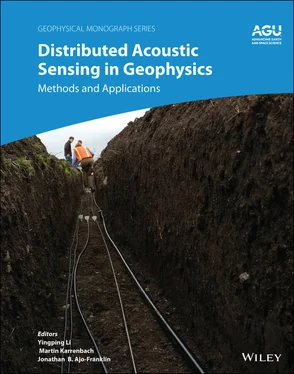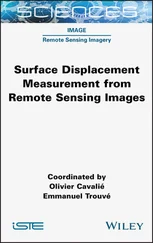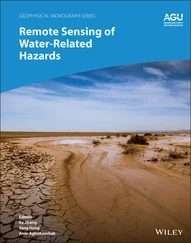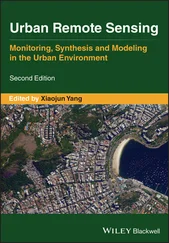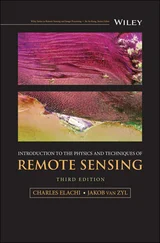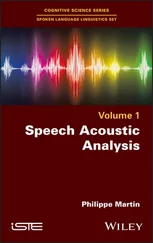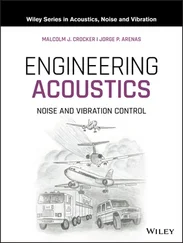Kaiheng YangKey Laboratories of Transducer Technology Institute of Semiconductors Chinese Academy of Sciences Beijing, China and College of Materials Science and Opto‐Electronic Technology University of Chinese Academy of Sciences Beijing, China
Sinem YavuzCentre for Exploration Geophysics Curtin University Perth, Australia and CO2CRC Limited Melbourne, Australia
Gang YuBGP Inc. China National Petroleum Corporation Zhuozhou, China and School of Information and Communication Engineering University of Electronic Science and Technology of China Chengdu, China
Siyuan YuanDepartment of Geophysics Stanford University Stanford, California, USA
Xiangfang ZengState Key Laboratory of Geodesy and Earth’s Dynamics Innovation Academy for Precision Measurement Science and Technology Chinese Academy of Sciences Wuhan, China and Department of Geoscience University of Wisconsin–Madison Madison, Wisconsin, USA
Wei ZhangSchool of Optical and Electronic Information National Engineering Laboratory for Next Generation Internet Access System Huazhong University of Science and Technology Wuhan, China
Reza Barati
Matt Becker
Gary Binder
Biondo L. Biondi
Stefan Buske
Dongjie Cheng
Feng Cheng
Steve Cole
Julia Correa
Thomas M. Daley
Timothy Dean
Yuting Duan
Mahmoud Farhadiroushan
Barry M. Freifeld
Andrew Greenwood
Alireza Haghighat
Ge Jin
John Michael Kendall
Hunter Knox
Ivan Lim Chen Ning
Nathaniel J. Lindsey
Min LouLinquing Luo
Stefan Lüth
Eileen R. Martin
Robert Mellors
Khalid Miah
Douglas Miller
Takashi Mizuno
Gerrit Olivier
Roman Pevzner
Michelle Robertson
Verónica Rodríguez Tribaldos
Bill Roggenthen
Baishali Roy
Ali Sayed
Alireza Shahkarami
Robert Stewart
Aleksei Titov
Whitney Trainor‐Guitton
Milovan Urosevic
Guchang Wang
Herbert F. Wang
Erik Westman
Ethan Williams
Mark E. Willis
Xiangfang Zeng
Ge Zhan
Zhongwen Zhan
Haijiang Zhang
Ran Zhou
Ding Zhu
Tieyuan Zhu
Distributed acoustic sensing (DAS) systems are optoelectronic instruments that measure acoustic interactions (distributed strain or strain rate) along the length of a fiber‐optic sensing cable. DAS observation systems can record sound and vibration signals along several tens of kilometers of sensing optical fiber with fine spatial resolution (1–10 m) and over a wide frequency range (from millihertz to tens of kilohertz). DAS provides a large sensing aperture for acquiring high‐resolution acoustic data in both time and space domains. The advantages of DAS technology have enabled its rapid adoption across a range of applications, including geophysics geohydrology, environmental monitoring, geotechnical and civil engineering (railroad, tunnel, and bridge monitoring), hazard mitigation and prevention, and safety and security fields.
This monograph focuses on various DAS applications in geophysics. The use of DAS in the oil, gas, geothermal, and mining industries for high‐resolution borehole and surface seismic imaging, and microseismic monitoring for hydraulic fractures has accelerated with improvements in the sensitivity of DAS instruments, advances in real‐time big data processing, and flexible and economic deployment of fiber‐optic sensing cables. There is also growing interest in using DAS for critical geophysical infrastructure applications, such as earthquake and near‐surface passive seismic analysis, including the development of tailored or novel numerical techniques. This book aims to engage both the scientific and industrial communities to share their knowledge and experiences of using DAS for novel geophysical applications.
The origin of this book was the 2017 American Geophysical Union (AGU) Fall Meeting, when scientists and engineers from both industry and academia gathered in New Orleans to present their fantastic research outcomes on DAS instrumentations and applications in geophysics and seismology. As DAS technologies have continued to advance, more and more successful geophysical DAS applications have been reported and published in different geophysical and seismological journals, abstracts, and proceedings of technical conferences, such as the AGU, the Society of Exploration Geophysicists (SEG), the European Association of Geoscientists and Engineers (EAGE), the Society of Petroleum Engineers (SPE), and the Seismological Society of America (SSA). However, few DAS books are available on DAS principles, instrumentation, and geophysical applications. Many attendees at the DAS sessions at the 2017 AGU Fall Meeting expressed that there was a need for a book on DAS geophysical applications. We had interesting discussions with many scientists and engineers working on the frontier of DAS geophysical applications about the potential for a book. We specially recognize Biondo L. Biondi, Thomas M. Daley, William Ellsworth, Mahmoud Farhadiroushan, Barry M. Freifeld, Albena Mateeva, Robert Mellors, Clifford H. Thurber, Herbert Wang, and Mark E. Willis, as well as many others for their encouragement.
During the 2017 AGU Fall Meeting in New Orleans, we fortunately got an opportunity to meet with the AGU Books Editor, Dr. Bose, who was already aware of this rapidly growing scientific field. We discussed a potential book on DAS geophysical applications, and she was very supportive and invited us to submit a book proposal for an AGU monograph. With no surprise, this DAS book proposal received very positive comments and constructive suggestions from all reviewers. Several reviewers also asked for an opportunity to submit their own contributions to this monograph. We are grateful to those anonymous reviewers of the book proposal for their positive comments and constructive suggestions that led this book to be initiated.
This monograph is organized into four parts. Part I starts with principles of DAS measurements and instruments. DAS interrogation units transmit a pulse of laser light into the fiber. As this pulse of light travels down the fiber, interactions within the fiber result in light reflections known as backscatter (Rayleigh scattering). Backscatters are determined by tiny strain events within the fiber, which in turn are caused by localized acoustic energy. This backscattered light travels back up the fiber toward the interrogation unit where it is sampled. Part II introduces various DAS applications in the oil and gas, geothermal, and mining industries. Part III looks at DAS applications in seismic monitoring. DAS microseismic monitoring of hydraulic fracturing is an industry application but with passive seismic sources. The microseismic DAS method has been shown to have sufficient sensitivity to record very small magnitude microearthquakes with DAS deployed in boreholes. Microseismic DAS systems can be naturally extended to monitoring larger earthquake activity, and slow deformation of Earth’s structure with large‐scale fiber‐optic networks. Part IV discusses DAS environmental and shallow geophysical applications such as geological carbon dioxide sequestration. The final chapter presents a review of fiber optical sensing applications in geophysics including historical developments and recent advances. The list of over 900 literature references of DAS and related technologies will benefit readers, especially newcomers who have just stepped into this fast-growing field.
We would like to thank the AGU Books Editorial Board for supporting this monograph. Without the efforts from contributing authors it would not have been possible to accomplish this project. We would also like to thank the many volunteer reviewers who spent tremendous amounts of time and effort to ensure that each chapter is of the highest quality. We appreciate Jonathan B. Ajo‐Franklin, Biondo L. Biondi, Mahmoud Farhadiroushan, Albena Mateeva, and Siyuan Yuan for providing their pictures as candidates for the book cover design. Thanks are also extended to the AGU Books editorial team at Wiley, especially Dr. Rituparna Bose, Layla Harden, Noel McGlinchey, Vaishali Rajasekar, Sangaprabha Mohan, Bobby Kilshaw, Nithya Sechin, and Emily Bae, for their organization, management, and cover design.
Читать дальше
